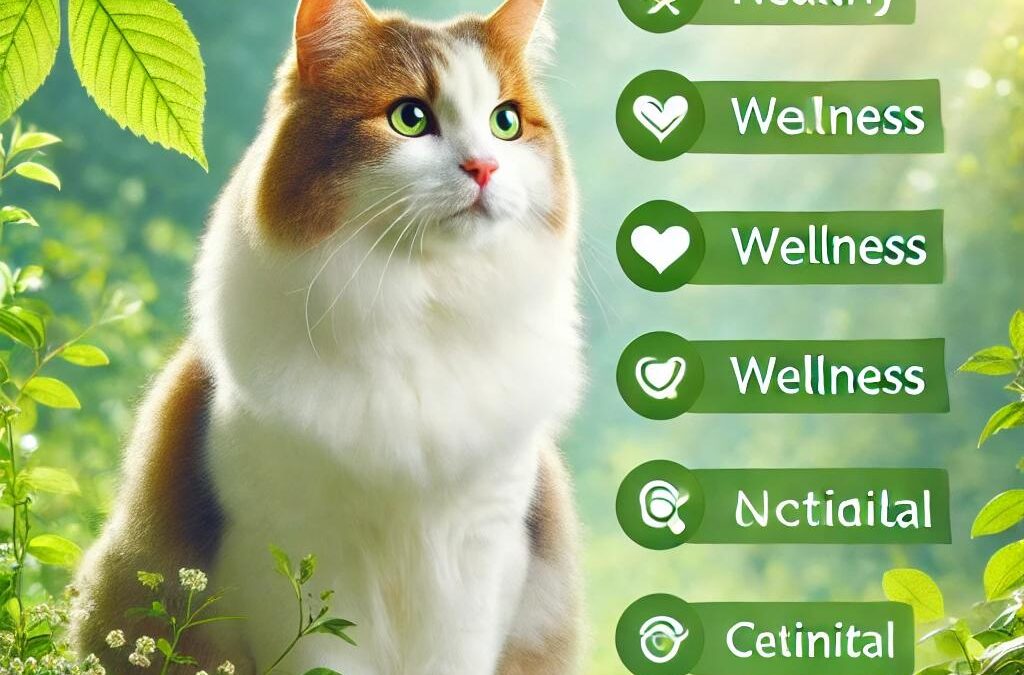
經過 TCMVET | 10 月 27, 2024 | 貓癌症和腫瘤
Pheochromocytoma, a rare adrenal gland tumor in cats, leads to an overproduction of hormones that can cause elevated blood pressure and increased heart rate. The preferred treatment is surgical removal of the affected adrenal gland, but the surgery is complex due to the gland’s location near major blood vessels. This article explores the surgical process for feline pheochromocytoma, the potential challenges during and after surgery, and effective post-operative care practices for cat owners.
What is Pheochromocytoma?
Pheochromocytoma is a tumor in the adrenal gland, which is responsible for producing hormones like adrenaline and noradrenaline. When this gland is affected, it can lead to intermittent surges in these hormones, causing symptoms like rapid heartbeat, high blood pressure, and periods of restlessness in cats. Managing these symptoms often requires surgical intervention, particularly if the tumor is causing health complications.
Pre-Surgical Preparation: Stabilizing Vital Signs
Before surgery, it’s crucial to stabilize the cat’s heart rate and blood pressure to ensure safe surgery conditions. Here’s how veterinarians typically manage this process:
- Medication for Heart Rate and Blood Pressure: Cats with pheochromocytoma often receive medications to lower their heart rate and blood pressure. This may take several weeks of treatment before surgery is deemed safe.
- Intensive Care for Severe Cases: In cats with dangerously high blood pressure, intensive care may be necessary to stabilize their condition before surgery. This close monitoring helps ensure the best possible outcome.
Surgical Procedure for Adrenal Gland Removal
The surgery to remove an adrenal gland with a pheochromocytoma is challenging, primarily because the gland is located near major blood vessels. The main objectives during surgery are:
- 腫瘤切除: The affected adrenal gland is carefully removed to eliminate the primary source of excessive hormone production.
- Addressing Spread to Other Organs: If the tumor has metastasized, partial or complete removal of nearby organs may be necessary, depending on the extent of the spread.
Post-Surgery Care: Monitoring and Recovery
Post-surgical recovery is crucial for cats with pheochromocytoma due to the risk of complications. Here’s what post-operative care involves:
- Intensive Monitoring for Complications: Blood pressure, heart rate, and respiratory function are closely observed. Complications like bleeding, blood pressure fluctuations, and respiratory issues are common, so close monitoring is essential.
- 疼痛管理: After surgery, cats receive medications to manage pain and reduce discomfort during recovery. Veterinarians carefully monitor their response to ensure proper pain relief.
- Observation for Infections: Post-operative infections can occur, so veterinarians monitor for any signs of infection, including fever or swelling.
At-Home Recovery and Long-Term Care
Once your cat returns home, it will need time to adjust and gradually regain its strength. Here’s how to create an optimal recovery environment:
- Provide a Quiet Space: Minimize stress and activity to support a peaceful recovery. A calm environment helps prevent unnecessary stress on your cat’s heart and blood pressure.
- Follow-Up Vet Visits: Regular check-ups are essential to monitor for any signs of recurrence or secondary health issues.
- 飲食調整: Your veterinarian may recommend a specific diet that supports recovery, especially if there were complications involving other organs.
Prognosis and Life Expectancy
The prognosis for cats with pheochromocytoma depends on factors like tumor spread, surgical success, and overall health. While some cats recover and go on to live several years after surgery, others may face shorter life expectancies if additional health issues are present. Your veterinarian will guide you in understanding your cat’s individual outlook.
Pheochromocytoma in cats is a challenging condition, but with skilled surgical intervention and careful post-operative care, many cats experience improved health and a better quality of life. By understanding the steps involved in the treatment process and following your veterinarian’s care guidelines, you can help your cat recover successfully from this complex condition.

經過 TCMVET | 10 月 27, 2024 | 貓癌症和腫瘤
Pheochromocytoma, a rare tumor of the adrenal gland, can cause intermittent spikes in hormone levels, leading to sudden changes in heart rate, blood pressure, and behavior in cats. Primarily affecting older cats, this tumor originates in the adrenal glands above the kidneys, which play a key role in hormone regulation. This article will explore how to identify pheochromocytoma symptoms in cats, effective diagnostic methods, and natural care options to help improve your cat’s quality of life.
Recognizing Symptoms of Pheochromocytoma
Pheochromocytoma’s hallmark is its intermittent symptoms, caused by the unpredictable release of hormones like adrenaline. Here are some common signs to look out for:
- Elevated Heart Rate and Blood Pressure: Spikes in heart rate and blood pressure can cause your cat to act unusually energetic or anxious during these episodes.
- Rapid Breathing: During hormone surges, cats may breathe more quickly or appear agitated.
- Periods of Nervousness or Agitation: Hormone fluctuations may leave your cat looking stressed or uneasy, even in calm environments.
- 食慾或體重的變化: Although less common, some cats may show changes in appetite or slight weight fluctuations due to metabolic impacts.
Diagnosing Pheochromocytoma in Cats
Accurate diagnosis of pheochromocytoma is essential to differentiate it from other health conditions that could cause similar symptoms. Veterinarians typically perform:
- 血液檢查: These tests may reveal abnormal hormone levels, suggesting adrenal gland issues.
- Ultrasound or CT Scans: Imaging can help identify tumors in the adrenal glands or determine if the cancer has spread to other organs.
- 尿液分析: Sometimes, testing the urine can reveal excess hormone levels linked to adrenal issues.
Natural Support Options for Cats with Pheochromocytoma
While medical interventions like surgery or medication may be necessary for managing pheochromocytoma, certain natural approaches can help improve your cat’s comfort and overall health:
- Ashwagandha(Withania somnifera): This adaptogenic herb helps regulate stress and may support hormone balance, which can be helpful for cats with adrenal gland irregularities. Ashwagandha can also improve energy levels and provide calming effects.
- 靈芝(Ganoderma lucidum): Known for its immune-boosting and anti-inflammatory properties, reishi mushroom can help manage inflammation and provide immune support, which may benefit cats dealing with tumors.
- 薑黃(薑黃): Curcumin, the active compound in turmeric, has antioxidant and anti-inflammatory effects that can support adrenal health. Turmeric may also help improve liver function, essential when managing hormone-related issues.
- Valerian Root (Valeriana officinalis): Known for its calming properties, valerian root may help reduce restlessness and anxiety, especially useful during sudden hormone surges.
- Dandelion Root (Taraxacum officinale): This herb supports liver function and may help remove toxins from the body, which can alleviate some strain on the adrenal glands.
Additional Lifestyle Tips for Managing Pheochromocytoma
To help maintain a calm and supportive environment for a cat with pheochromocytoma:
- Create a Stress-Free Space: A quiet, cozy environment can help your cat feel secure and minimize stress, especially during episodes of hormonal imbalance.
- Use Soft Lighting and Relaxing Sounds: Avoid bright lights and loud sounds, which can aggravate agitation. Soft music or calming sounds can help relax your cat.
- Provide Regular, Mild Exercise: While it’s important not to overexert a cat with heart or blood pressure issues, gentle play can help maintain physical health and reduce stress.
Consulting a Veterinarian for a Holistic Approach
When considering natural treatments, consult a veterinarian familiar with integrative medicine. They can advise on proper dosages and any potential interactions between herbs and prescribed medications, ensuring your cat receives a well-rounded care plan.
While pheochromocytoma is a challenging condition, understanding its symptoms and incorporating natural, supportive care can greatly improve a cat’s comfort and quality of life. Herbs like ashwagandha, reishi, and turmeric, combined with a peaceful environment and regular veterinary guidance, can play a significant role in managing pheochromocytoma’s effects and helping your cat lead a fulfilling life.

經過 TCMVET | 10 月 27, 2024 | 貓癌症和腫瘤
Bile duct cancer, also known as bile duct carcinoma, is a severe condition that affects the liver of cats, predominantly in those aged ten and older. This aggressive form of cancer develops within the bile ducts, where bile is produced and carried from the liver to the intestines. In cats, this cancer type is often difficult to detect early due to the subtle onset of symptoms. Recognizing the disease’s signs and understanding the treatment options can help manage its progression and improve your cat’s quality of life.
What is Bile Duct Carcinoma in Cats?
Bile duct carcinoma is a type of cancer that originates in the epithelial lining of the liver’s bile ducts. The disease most often affects the intrahepatic bile ducts, which are within the liver, rather than the extrahepatic ducts outside the liver. This type of liver cancer is unfortunately common in older cats, especially females, though it has no known breed predisposition.
Symptoms to Watch for in Bile Duct Cancer
Given its location in the liver, bile duct cancer can disrupt essential bodily functions by blocking bile flow. Here are key symptoms to watch for:
- Jaundice (yellowing of the eyes and skin): Blocked bile flow can lead to an accumulation of bilirubin, causing jaundice.
- Loss of appetite and weight loss: Cats with liver tumors may experience a marked decrease in appetite and gradual weight loss.
- Lethargy: The body’s struggle to manage the buildup of toxins often leaves affected cats feeling fatigued.
- Abdominal pain or bloating: Cats may show discomfort if the liver or bile ducts are swollen.
Due to these symptoms’ similarity to other liver diseases, a professional veterinary diagnosis is essential.
Complications and Cancer Spread
One of the challenges of bile duct carcinoma is its high rate of metastasis, with 67 to 88 percent of affected cats experiencing tumor spread to other organs. Once the carcinoma advances, it can spread to the lungs, abdominal lining, pancreas, and even the lymph nodes surrounding the diaphragm. This extensive metastasis often complicates treatment, emphasizing the importance of early intervention.
Treatment Options for Bile Duct Carcinoma in Cats
Managing bile duct cancer in cats often requires a multifaceted approach. Here are the main treatment methods:
- 手術: If the tumor is localized within the liver’s bile ducts and has not yet spread extensively, surgical removal can be considered. However, because of the high metastasis risk, surgery alone may not be fully effective.
- 化療: Since bile duct carcinoma tends to metastasize, chemotherapy is often used to slow tumor growth and manage metastasis. The treatment plan may vary depending on the extent of the spread.
- Supportive and Palliative Care: For advanced cases, palliative care is crucial in maintaining comfort and improving quality of life. Supportive care may include pain management, appetite stimulants, and dietary changes that support liver health.
預後和生活品質
Cats diagnosed with bile duct carcinoma often have a guarded prognosis due to the disease’s high metastatic potential and difficulty in complete surgical removal. However, prompt treatment and careful management of symptoms can help prolong their life and improve well-being. Monitoring your cat’s health closely, especially in their senior years, and seeking veterinary advice if any symptoms appear is crucial.
Bile duct carcinoma in cats is a serious condition that requires diligent care and awareness. By staying informed about the symptoms and potential treatment options, pet owners can work with their veterinarians to develop a care plan that best suits their cat’s needs. Early detection and thoughtful management can help ease the journey for both the cat and its owner.

經過 TCMVET | 10 月 10, 2024 | 貓癌症和腫瘤
As a cat owner, noticing a sudden or gradual change in your pet’s eating habits can be alarming. While dental disease is the most common reason for a cat to refuse food, it’s essential to be aware that mouth cancer could also be a potential cause. According to the Cornell University College of Veterinary Medicine, mouth cancer is the fourth most prevalent type of cancer in cats, and it can pose serious health risks if left untreated.
Understanding Mouth Cancer in Cats
Mouth cancer in cats often manifests as tumors or lesions in the oral cavity, which can be painful and lead to significant changes in behavior, including a refusal to eat. The types of tumors that can develop in the mouth include squamous cell carcinoma, fibrosarcoma, and melanoma, among others. These tumors not only cause discomfort but can also spread to other parts of the body, making early detection and treatment crucial.
Signs and Symptoms to Watch For
As a pet owner, being vigilant about changes in your cat’s behavior and health is vital. Common signs that may indicate mouth cancer include:
- Refusal to Eat: If your cat suddenly stops eating or shows reluctance to chew, it could be a sign of pain or discomfort.
- Bad Breath: An unusually strong or foul odor from your cat’s mouth may indicate underlying health issues.
- Excessive Drooling: Increased salivation can be a response to pain or irritation in the mouth.
- Visible Tumors or Lesions: Check for any unusual growths or sores in the mouth that persist.
- 減肥: If your cat is not eating properly, weight loss may occur, which can lead to further health complications.
- 行為改變: Increased irritability or withdrawal from social interactions can signal discomfort or pain.
診斷和治療方案
If you notice any of these signs, it’s essential to consult your veterinarian for a thorough examination. Diagnosis may involve:
- 體檢: A vet will check your cat’s mouth for any visible abnormalities.
- 活檢: A sample of tissue may be taken for laboratory analysis to confirm the presence of cancer.
- 影像學: X-rays or ultrasounds can help determine if the cancer has spread to other areas.
Treatment options for mouth cancer in cats vary based on the tumor type and its stage. Possible treatments include:
- 手術: Surgical removal of the tumor may be necessary to alleviate pain and prevent further spread.
- 放射治療: This treatment can help shrink tumors and reduce discomfort.
- 化療: In some cases, chemotherapy may be recommended to target cancer cells.
Being aware of the signs of mouth cancer in cats is crucial for timely intervention and treatment. If your normally healthy cat suddenly refuses to eat or shows any of the aforementioned symptoms, don’t hesitate to reach out to your veterinarian. Early diagnosis and treatment can significantly improve your cat’s quality of life and increase the chances of a positive outcome.

經過 TCMVET | 10 月 9, 2024 | 貓癌症和腫瘤
Feline Oral Squamous Cell Carcinoma (FOSCC) is an aggressive form of cancer that affects cats, particularly in their mouths or throats. It is the most common oral cancer in felines, accounting for about 70% of oral tumors. As this type of cancer progresses rapidly, early detection and effective treatment are crucial to improving a cat’s quality of life. One of the primary treatments for FOSCC is surgery. In this article, we will examine the efficacy of surgical interventions, the limitations of this approach, and potential complementary treatments to help manage this challenging condition.
了解貓咪口腔鱗狀細胞癌
FOSCC often manifests as a mass or ulcerated area in the cat’s mouth, usually affecting the gums, tongue, or palate. Due to its location, it can cause significant discomfort, including difficulty eating, drooling, and bad breath. Unfortunately, this cancer is known for its high invasiveness and tendency to spread quickly to surrounding tissues, making treatment more complex.
Surgical Options for Feline Oral Squamous Cell Carcinoma
- Tumor Resection (Partial or Complete Removal)Surgery for FOSCC primarily focuses on tumor resection—either partial or complete removal of the tumor. This approach is usually recommended when the tumor is still localized and hasn’t spread to nearby structures. The goal is to remove the mass while minimizing damage to healthy tissues. However, due to the aggressive nature of FOSCC, achieving complete tumor removal can be difficult.
- 下顎骨切除術或上顎骨切除術In more advanced cases where the tumor affects the jawbone, a mandibulectomy (removal of part of the lower jaw) or maxillectomy (removal of part of the upper jaw) may be required. These surgeries can be quite invasive but may offer the best chance for local tumor control. Cats that undergo these procedures often require time to adjust, but they can generally return to a good quality of life after recovery.
- 雷射手術Laser surgery is another option for treating FOSCC. It uses focused light beams to precisely cut away cancerous tissues while minimizing damage to surrounding areas. Laser surgery is less invasive than traditional surgery, often resulting in less pain and faster healing for the cat. However, it may not be suitable for large or deeply rooted tumors.
Limitations of Surgical Treatments for FOSCC
While surgery is a valuable tool in the treatment of feline oral squamous cell carcinoma, there are significant limitations to its effectiveness:
- Invasive and Complex ProceduresSurgical removal of FOSCC, especially in advanced cases, can be highly invasive. Cats undergoing partial jaw removal (mandibulectomy or maxillectomy) may face long recovery periods, and some may struggle with eating and grooming post-surgery. This can lead to a decreased quality of life, even if the surgery successfully removes the tumor.
- High Recurrence RatesEven with aggressive surgery, FOSCC has a high likelihood of recurrence. Complete tumor removal can be difficult due to the cancer’s tendency to invade surrounding tissues, including bones and muscles. Studies show that many cats experience local recurrence within a few months of surgery, which can limit long-term survival outcomes.
- Limited Survival TimeDespite surgical intervention, the survival time for cats with FOSCC remains limited. In many cases, surgery may extend life expectancy by only a few months. For this reason, many veterinarians recommend combining surgery with other treatments, such as radiation therapy or chemotherapy, to improve overall outcomes.
Complementary and Alternative Treatments
Given the limitations of surgery, many pet owners and veterinarians turn to complementary treatments to help manage FOSCC and improve a cat’s quality of life. These approaches can be used alongside surgery or as standalone options for cases where surgery may not be viable.
- 放射治療Radiation therapy is often used in conjunction with surgery to help control the spread of FOSCC. While it may not cure the cancer, it can reduce tumor size and alleviate symptoms, especially pain. Radiation is most effective when combined with other treatments, such as chemotherapy or immunotherapy.
- 化療While chemotherapy alone has shown limited success in treating FOSCC, it can be useful in conjunction with surgery or radiation therapy to help manage the spread of cancerous cells. Chemotherapy can slow down the progression of the disease and provide symptomatic relief, although its side effects need to be managed carefully.
- Holistic and Nutritional SupportIntegrating nutritional therapy 和 整體治療 like Traditional Chinese Medicine (TCM) can improve a cat’s overall health during cancer treatment. Herbal supplements, anti-inflammatory foods, and immune-boosting compounds can help support the body’s natural defenses, improve appetite, and reduce pain or discomfort associated with the tumor.
- 疼痛管理Pain management is a critical component of FOSCC treatment. Medications, acupuncture, and massage therapy can help alleviate the discomfort caused by the tumor or post-surgery recovery. Maintaining a good quality of life is essential, especially for terminal cases where extending lifespan may not be the primary goal.
Surgical intervention remains one of the most effective ways to manage feline oral squamous cell carcinoma, particularly in its early stages. However, due to the aggressive nature of this cancer and its high recurrence rate, surgery alone is often not enough to ensure long-term survival. By combining surgery with complementary therapies such as radiation, chemotherapy, and holistic support, pet owners can maximize their cat’s quality of life and possibly extend their time with them. Understanding the efficacy and limitations of surgical options allows pet owners to make informed decisions for their feline companions facing this challenging disease.

經過 TCMVET | 2024 年 9 月 7 日 | 貓癌症和腫瘤
當貓身體其他部位的癌症擴散到肺部時,就會發生貓肺轉移。這是一種嚴重的疾病,通常預示著晚期癌症。肺轉移的早期檢測可能具有挑戰性,但放射影像(X 光)是識別貓肺部腫瘤的最有效的診斷工具之一。本文將探討貓肺轉移瘤的放射學徵象,並著重於通常表徵轉移性肺腫瘤的不明確邊界和肺泡模式的意義。
了解貓咪的肺轉移瘤
肺轉移是癌細胞從身體其他部位擴散到肺部。貓擴散到肺部的常見原發性腫瘤包括乳腺腫瘤、鱗狀細胞癌和某些胃腸道癌症。識別這些轉移的放射學跡象對於獸醫及早診斷疾病並推薦治療方案至關重要。
貓肺轉移瘤的主要放射線徵象
放射影像是診斷貓肺轉移的重要工具。獸醫在評估疑似患有轉移性肺病的貓的胸部 X 光檢查時會尋找幾個重要特徵。
1. 肺結節邊界不清
貓肺轉移最重要的放射學特徵之一是存在邊界不明確或不明確的肺結節。這些結節與邊緣較尖銳的原發性肺部腫瘤不同,顯得模糊或不明顯。這表明腫瘤以瀰漫性方式浸潤肺組織,使其難以與正常組織區分。
這些不清楚的邊界可能表明癌症並不局限於局部區域,並且可能已廣泛擴散到整個肺部。這在乳癌病例中尤其常見,乳癌經常轉移到貓的肺部。
2. 肺泡形態
貓肺轉移的另一個常見放射學特徵是肺泡模式。當癌症浸潤肺泡(肺部的微小氣囊)並充滿腫瘤細胞或相關液體時,就會發生這種情況。在 X 光上,肺泡圖案表現為不透明度增加的區域,通常稱為「毛玻璃」外觀。
肺泡圖案很重要,因為它表明腫瘤已在肺腔內擴散,這可能會嚴重影響貓的呼吸功能。具有這種症狀的貓可能會出現呼吸困難、咳嗽和其他呼吸困難的症狀。
3. 胸腔積水
在某些情況下,貓的肺轉移也可能與胸腔積水有關,胸腔積水是肺部周圍空間積聚的液體。胸腔積液會使診斷更加複雜,因為積液可能會掩蓋肺部結節的存在或使 X 光顯得不太清晰。
在射線照片上,胸腔積液被視為肺部周圍的一層液體,通常導致心臟和橫膈膜顯得不太清晰。如果胸腔積液與肺轉移同時存在,則表示該疾病已處於較晚期階段。
4. 標誌組合
患有肺轉移的貓同時表現出多種放射症狀的情況並不少見。胸部 X 光檢查可能會顯示不清楚的肺結節、肺泡模式和胸腔積液,這使得診斷具有挑戰性,但也增強了對轉移性疾病的懷疑。這些重疊的跡象可以為獸醫提供關鍵資訊來指導治療決策。
通常與貓肺轉移相關的原發腫瘤
貓的幾種原發性腫瘤很可能轉移到肺部。認識這些癌症並了解其放射學模式可以幫助獸醫和寵物主人就診斷和治療做出明智的決定。
1. 乳癌
乳腺腫瘤是貓咪最常見的癌症之一,尤其是未絕育的雌貓。這些腫瘤具有高度侵襲性並且經常轉移至肺部。在放射照片上,乳癌通常表現為多個邊界不清的肺結節,有時伴隨肺泡圖案。
2. Squamous Cell Carcinoma (SCC)
鱗狀細胞癌是皮膚癌的一種,在晚期病例中可以轉移到肺部。放射線學徵象與其他轉移性癌症相似,具有不清晰的肺結節和潛在的肺泡浸潤。
3. 胃腸道腫瘤
雖然不太常見,但貓的某些胃腸道腫瘤(例如腺癌)也可以轉移到肺部。放射線照片可能會顯示邊界不清的結節和肺泡圖案的混合,顯示晚期轉移擴散。
貓肺轉移是一種嚴重且常常危及生命的疾病,需要及時、準確的診斷。放射影像是檢測貓肺轉移跡象最有效的方法之一。關鍵的放射學特徵包括邊界不清的肺結節和肺泡模式,這兩者都可以顯示轉移性疾病的存在。此外,胸腔積液可能會使診斷進一步複雜化,但它是晚期癌症的重要標誌。
了解這些放射學跡像以及通常擴散到肺部的癌症類型,可以幫助獸醫和寵物主人就治療方案做出明智的決定。早期發現肺轉移可以提高成功治療的機會,有可能延長貓咪的生活品質。







